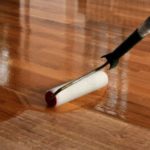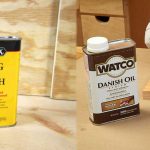Can You Use Polyurethane Over Chalk Paint? Let’s Figure Out!
Chalk paint is popular worldwide because it is easy to apply and offers a vintage look. However, even though chalk paint is beautiful, it may need extra protection to last a long time. This is why you should use polyurethane, which serves as a durable protective topcoat with a glossy appearance.
Now, you might wonder, can you apply polyurethane over chalk paint? You certainly can, but there are a few considerations.
- Before applying polyurethane, you need to wait until the paint is completely dry
- Once dry, lightly sand the chalk paint surface so that the polyurethane can adhere properly
- Lastly, use a water-based polyurethane to prevent discoloration of the chalk paint
In this article, we will discuss the benefits and drawbacks of using polyurethane over chalk paint to help you understand how to use polyurethane.
Can You Put Polyurethane Over Chalk Paint?
Yes. You can put a layer of polyurethane over chalk paint for added protection, especially if the surface is exposed frequently to sunlight and moisture.
Research shows that polyurethane is made when polyester diol and diisocyanate react together. This creates a strong and flexible polymer that forms a dense, impermeable film.
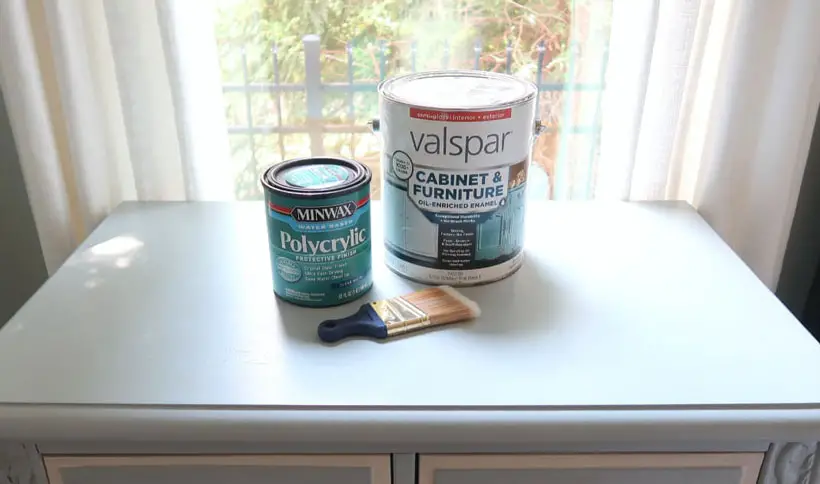
And this film acts as a physical barrier against stress, water, UV radiation, and chemicals, preventing them from penetrating the chalk paint layer.
The polyurethane coating is also highly durable, dries quickly, and resists chemicals and abrasion. In addition, polyurethane includes special additives like UV absorbers. This stops damaging UV rays from permeating the chalk paint and harming it.
According to experts, it is best to avoid oil-based polyurethane and wait for the paint to dry fully before applying the protective coat. By doing so, you can ensure that your painted surface stays in great condition for a long time.
Why Should You Use Water-Based Polyurethane Over Chalk Paint Rather Than Oil-Based Polyurethane?
Experts advise using polyurethane with a water base over chalk paint rather than oil-based polyurethane for several reasons. Some of the most popular water-based polyurethane options you can use over chalk-painted surfaces include:
- Minwax Polycrylic Protective Finish
- Varathane Crystal Clear
- Flat Out Flat Water Based Top Coat
- High-Performance Top Coat
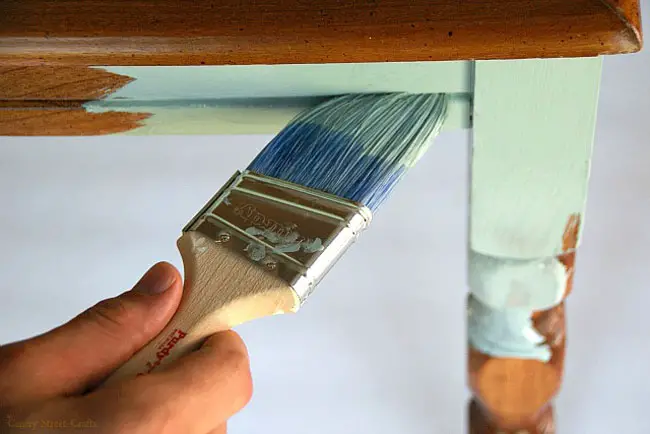
See the table below to see why water-based polyurethane is preferable over oil-based polyurethane.
| Reason | Water-Based Polyurethane | Oil-Based Polyurethane |
|---|---|---|
| Application | You can apply it easily and smoothly | It can be trickier to apply |
| Drying time | It dries quickly | Takes a long time to dry |
| Odor | It has little to no odor | It has a strong odor |
| Color preservation | Does not yellow over time | It can yellow after a certain time |
| Safety | It is safer to use | It requires caution and ventilation |
| Availability and cost | It is widely available and affordable | It might costly |
Apart from those, water-based polyurethane is more resilient than oil-based polyurethane. This makes it a better choice for shielding chalk paint projects from spills, chips, and wear and tear.
Besides, variants with a water base dry much faster than oil-based polyurethane, allowing you to add multiple layers in a shorter amount of time.
Overall, Polyurethane which has a water base is safer to use and more environmentally friendly than oil-based polyurethane since it emits significantly less fumes.
Step-by-Step Guide: Applying A Layer Of Polyurethane Over Chalk-Painted Surface
It is crucial to follow a few instructions if you are applying polyurethane for the first time over a surface that has been painted with chalk. Below we have provided a general guide to help you:
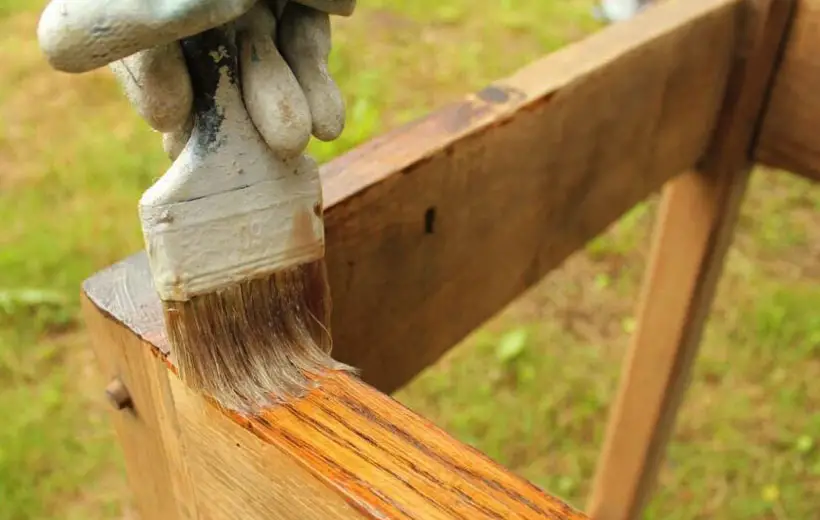
Step 1
First and foremost, it is essential to check that the surface is clear of dust and dirt. Clean the surface thoroughly with a gentle, damp cloth, and then allow it to completely dry.
Step 2
After that, softly sand the surface with sandpaper. This gives the surface a rougher texture, which helps the polyurethane adhere to the surface more effectively. Take care not to over sand and ruin the surface.
Step 3
Now it is time to apply polyurethane. Remember to mix it well without creating bubbles. Then, apply a light coating of polyurethane to the surface with a foam brush or a synthetic bristle brush.
Step 4
After applying the first layer of polyurethane, it is important to allow at least 24 hours for it to dry completely before proceeding.
Step 5
Once the first layer is fully dry, you can lightly sand it to smoothen any imperfections before applying the second coat. This step will help you achieve a flawless finish.
Step 6
Lastly, add two to three more coatings for maximum coverage and an outstanding finish. Remember, you need to let the previous layer dry completely before applying a new layer of polyurethane.
What Are The Benefits of Using Polyurethane As A Topcoat Over Chalk Paint?
There are numerous advantages of using polyurethane as a topcoat over chalk paint. To learn more about the advantages of applying polyurethane, see the list we have added below.
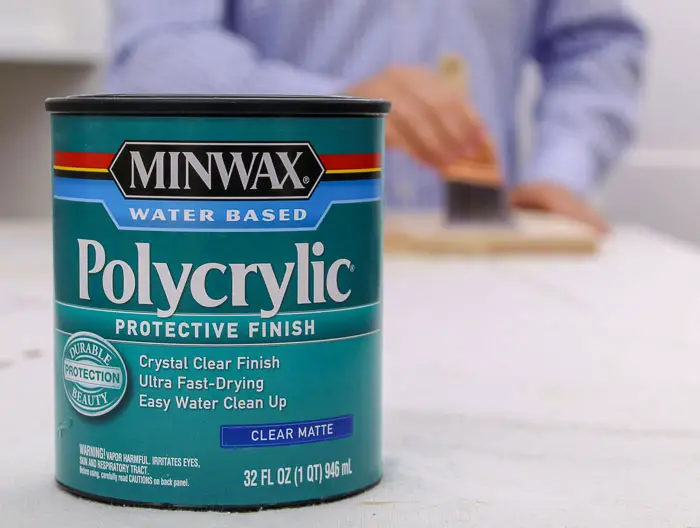
It Ensures Greater Resistance
When you apply a layer of polyurethane, it creates a surface that is sturdy and resilient. And it can withstand the wear and tear of regular use.
Thus, it is a great solution for heavily used places like kitchen counters, tables, and furniture. That’s because it can endure typical wear and tear, such as scrapes, spills, and moisture.
Provides Extra Protection
You can give the chalk paint underneath an additional layer of protection by using polyurethane as a topcoat. Additionally, polyurethane acts as a shield and prevents the paint from fading or turning yellow over time and preserves the surface’s good looks.
Enhances The Appearance Of Chalk Paint
Applying polyurethane topcoats over chalk paint can give the painted surface a sleek and lustrous sheen. This can transform the look of your furniture and give them a more sophisticated appearance.
Provides UV Protection
Polyurethane can provide UV protection, which can help prevent the paint from fading over time.
It Is Resistant To Water
Polyurethane is a waterproof and moisture-resistant coating, making it ideal for surfaces that are regularly exposed to water or need frequent wiping. This feature is especially useful for outdoor objects, bathroom furniture, and kitchen cabinets.
This unique characteristic of polyurethane helps to protect the painted surface from damage and keeps the surface looking great, even after years of use.
Applying Polyurethane Over Chalk-Painted Surface: Common Problems And Their Fixes
You can experience some typical issues if you are applying polyurethane over a chalk-painted surface for the first time. To learn more about these issues and how to handle them, read the list below:
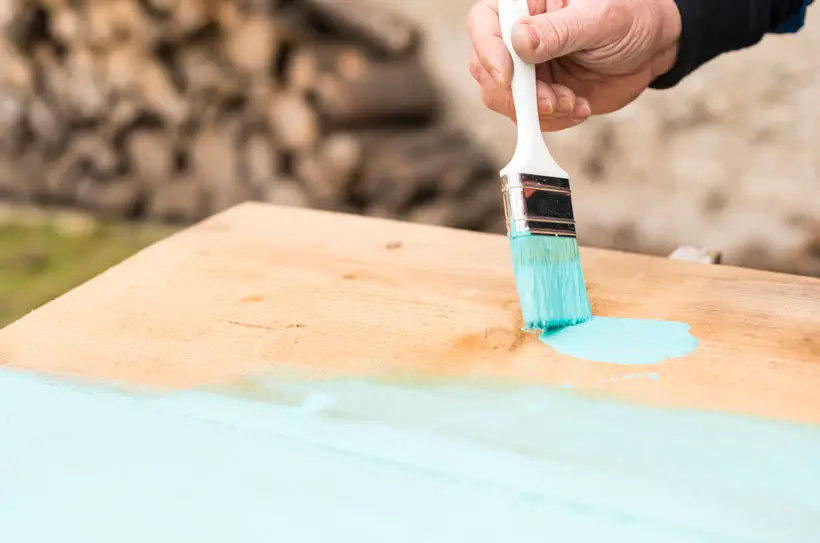
Problem 1: The paint may bleed through
When polyurethane is applied over chalk paint, the pigments in the chalk paint may migrate upward and contaminate the polyurethane layer.
This problem most frequently occurs when you apply polyurethane before the chalk paint has dried entirely, allowing the pigments to rise to the surface and stain the topcoat.
Solution
To stop bleed-through, you need to apply a sealing layer beneath the polyurethane. You can apply a good primer like the Zinsser B-I-N Shellac-Base Primer or Clear B-I-N sealer over the paint.
Before applying polyurethane, try to make sure the chalk paint has had adequate time to dry and cure.
Problem 2: Difficulty in reapplication
Did you know that polyurethane creates a durable layer that is excellent for protecting surfaces? However, one challenge with using it is that if it gets damaged, reapplying it can be difficult compared to chalk paint.
Solution
Make sure the chalk paint is completely dry and applied perfectly before using polyurethane. That’s because it might be difficult for you to reapply the paint after using polyurethane.
If you think there is a good chance you can touch up the paint in the future, you should use a varnish designed specifically for chalk paint.
Problem 3: Changing the matte finishing of the chalk paint
While polyurethane is a great option for protecting surfaces, it is vital to be aware that it can produce a glossy finish. And that may not be ideal if you prefer the matte effect and chalky appearance of chalk paint.
Solution
If you want to maintain the matte appearance, use a matte topcoat. If you want to give the surface greater depth, use wax or glaze.
Problem 4: The color changes over time
According to a study, polyurethane may gradually turn yellow if exposed to direct sunlight or UV rays over extended periods. This color change has the potential to ruin the chalk paint’s aesthetic appeal.
Solution
Use water-based polyurethane instead of oil-based if you want to stop your painted surface from turning yellow. Polyurethane with a water base is less likely to be yellow than variants with an oil base.
Problem 5: Difficulty adhering to the surface
Polyurethane may not adhere well to the surface due to its unique texture. The Polyurethane surface may eventually peel off as a result of this lack of adhesion between the two layers.
Solution
It is crucial to prepare the surface before you start applying polyurethane. You should lightly sand the chalk paint to create a surface with a rougher texture, which will allow the Polyurethane to better grip the surface.
If you’re considering using polyurethane over surfaces painted with chalk paint, our article on can you put polyurethane over polycrylic considerations might provide insights that could help guide your decision. Furthermore, if you’re seeking guidance on how to achieve a flawless polyurethane finish and remove bumps, our guide on how to get bumps out of polyurethane finish is here to offer assistance. We understand the importance of achieving the best finishes and addressing specific application challenges, and our comprehensive resources are designed to help you navigate and make informed choices for your woodworking projects.FAQs
To learn more about how to apply polyurethane on chalk paint, see the frequently asked questions below.
Q: What is chalk paint and how does it differ from regular paint?
Chalk paint is a type of paint that has a matte finish and a thicker consistency compared to regular paint.
Q: Do I need to apply wax after applying polyurethane over a chalk-painted surface?
No, you do not need to add wax after applying polyurethane over a chalk-painted surface as polyurethane provides a protective finish on its own.
Q: Do I need to seal chalk paint before using polyurethane?
No, sealing chalk paint is not necessary before using polyurethane. The porous surface of chalk paint makes it ideal for polyurethane to stick to the surface.
Q: How long does polyurethane take to dry on top of chalk paint?
The number of coats used, the temperature, and the humidity affects how quickly polyurethane dries on chalk paint. After the last application, you should give the finish 24 to 48 hours to dry.
Q: Can I use a roller to apply polyurethane over chalk paint?
You should not use a roller to apply polyurethane. It is better to use either a synthetic bristle brush or a foam brush to put polyurethane on a chalk-painted surface for an even coat.
Final Words
In conclusion, you can use polyurethane over a chalk-painted surface. You should add a layer of polyurethane on chalk paint to get a durable and long-lasting finish for your painted surfaces. It is a good idea to pick a water-based polyurethane that complements the chalk paint beautifully.
However, you should remember to clean the surface to remove all the dirt or debris. Overall, polyurethane improves the appearance of the chalk paint in addition to protecting against scuffs and abrasion.



